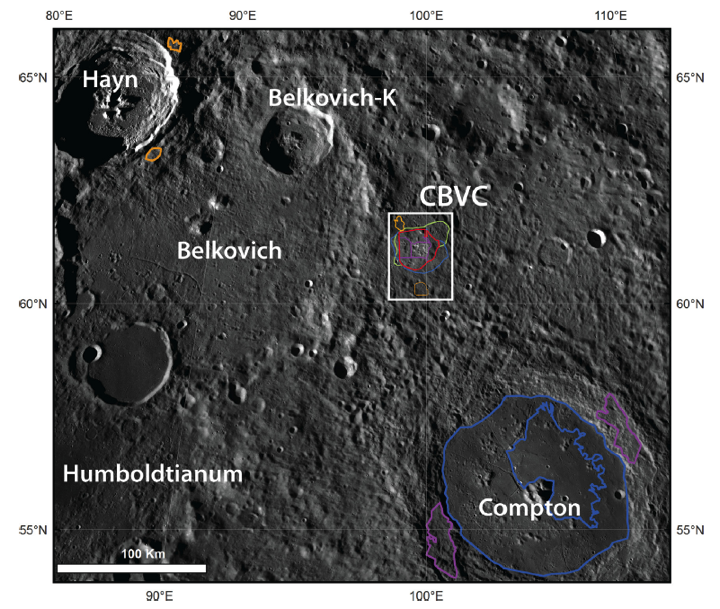The Moon has been an object of fascination for millennia, captivating humanity with its mystical glow.
However, the enigmatic celestial body continues to astound scientists with its yet unrevealed secrets.
One such mystery lies beneath the South Pole-Aitken Basin, one of the largest preserved craters in our Solar System, concealed on the Moon’s far side.
The discovery of a colossal mass anomaly in 2019 triggered a flurry of scientific interest and triggered various lunar exploration projects.
Planetary scientists stumbled upon a subsurface structure weighing approximately 2.18 billion billion kilograms and extending more than 300 kilometers deep.
The peculiar aspect is that they believe this massive formation might contain metal from the asteroid that birthed the South Pole-Aitken Basin.
“Imagine taking a pile of metal five times larger than the Big Island of Hawaii and burying it underground. That’s roughly how much unexpected mass we detected,” said lead author Peter B. James from Baylor University.
This scientific breakthrough hinged on the data from NASA’s Gravity Recovery and Interior Laboratory (GRAIL) mission spacecrafts.
GRAIL probes provide valuable information about the Moon’s internal composition by recording delicate changes in its gravitational field. Intriguingly, the discovered mass was substantial enough to depress the entire basin floor by approximately a kilometer.
This discovery was further corroborated by lunar topography data from the Lunar Reconnaissance Orbiter, which revealed an extraordinary amount of mass nestled hundreds of miles beneath the South Pole-Aitken Basin.
The origin of this excess mass could be the remains of the asteroid that caused the crater, now embedded deep within the Moon’s mantle.
Computer simulations offered further insight into this geological enigma.

One theory suggests that when the asteroid collided with the Moon around 4 billion years ago, it got ensnared in the mantle instead of sinking into the core. Another hypothesis argues that the concentration of dense oxides might have coalesced during the solidification of the Moon, as its magma ocean cooled and settled.
The South Pole-Aitken Basin is more than just a geological wonder; it’s a scientific goldmine.
It offers invaluable opportunities to probe the Moon’s internal composition and historical evolution. The colossal basin also provides a unique laboratory to study the aftermath of a catastrophic asteroid impact on a rocky planet.
However, the South Pole-Aitken Basin isn’t the Moon’s only curiosity.
In the same vein, astronomers recently announced the detection of a massive heat-emitting mass lurking under the Compton and Belkovich craters on the Moon’s far side. These discoveries cement the Moon’s status as a celestial enigma and tantalize our scientific curiosity to unravel its secrets.

Several space missions, including India’s maiden lunar lander and NASA’s Artemis 3, have the South Pole-Aitken Basin in their crosshairs, hoping to uncover more about this intriguing region.
Its unique geological features and rich scientific potential make it an irresistible target for future lunar expeditions.
While the Moon might seem a familiar sight in our night sky, these recent discoveries emphasize how much remains unknown about our closest celestial neighbor.
The hidden mass anomalies beneath the lunar surface, particularly in the South Pole-Aitken Basin, underscore the Moon’s lingering mysteries and our relentless quest to uncover them.
This extraordinary find underscores the relevance and urgency of lunar exploration, which continues to shed light on the universe’s enigmatic history and, ultimately, our place within it.
Why Did NASA Stop Going To The Moon?
WATCH THE VIDEO BELOW:
COMMENTS POLICY: We have no tolerance for messages of violence, racism, vulgarity, obscenity or other such discourteous behavior. Thank you for contributing to a respectful and useful online dialogue.